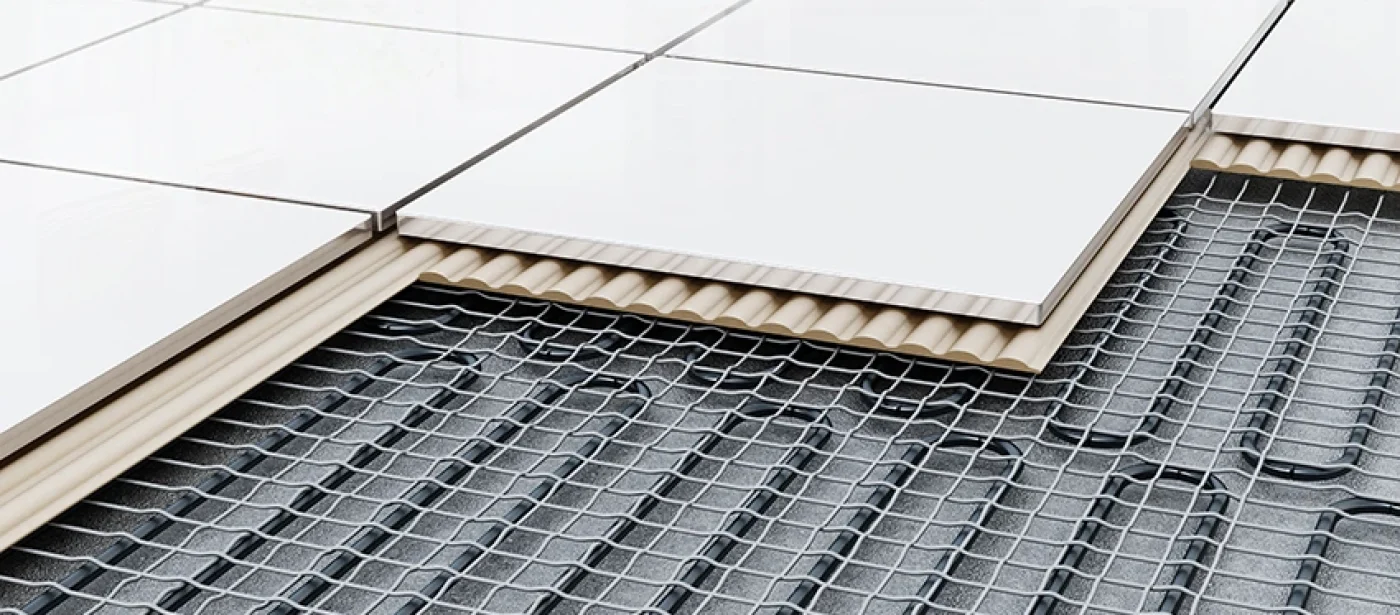What do you know about in-floor heating? If you think it’s just for keeping feet warm and cozy in the bathroom or basement, you haven’t seen the whole picture. To help clear the air, we’ve put together this guide outlining radiant floor heating systems.
What is Radiant Floor Heating?
The answer is in the name: Radiant floor heating (RFH) systems conduct heat through the floor rather than the air (like furnaces and other conventional forced-air systems).
Again, however, don’t let the name alone fool you. These are much more than just heated floors. Using a series of tubes or coils installed below your floor’s surface instead of ductwork, RFH systems circulate heat and warm the entire space from the ground up.
What are the Pros and Cons?
As with any HVAC system, there are positives and negatives to consider when it comes to RFH.
Pros
- Even, Continuous Heat: Heatwaves radiate and rise from the floor to warm the space consistently, unlike the warm air produced in blasts by forced-air systems that rises up and cools down.
- More Efficient: According to the U.S. Department of Energy, RFH is more efficient than baseboard heating and because there are no ductwork losses, it’s usually more efficient than forced-air heating as well.
- No Allergen Distribution: There are no blowing dust mites or other airborne particles that often hide in heating ducts.
- Hidden and Mostly Silent: There’s no loud furnace kicking on and off, and no visible radiators or vents.
Cons
- Difficult, More Expensive Installation: RFH installations are more complicated and generally require removing the floors (or being installed before floors in the case of new homes).
- Provides Heat Only: Unlike a forced-air HVAC system, RFH specifically provides heat.
What Are the Different Types of RFH?
There are two types of RFH: electric and hydronic. Both provide the same essential function, but a few key differences should be considered when choosing one for your home.
- Electric RFH systems use coils that are heated by – you guessed it – electricity.
- Hydronic systems use tubes heated by hot water, thus requiring a separate heat source for the water: an oil or gas-fired boiler or a kerosene, gas, or solar water heater.
Which Type Should I Choose?
When choosing which system to install, you should consider how it will be used and the associated costs. While electric systems are cheaper to install than hydronic, they will have a higher operating cost. As a result, hydronic RFH is more cost-effective in the long run for heating your whole house, whereas electric is ideal as a supplemental system in single rooms or areas.
There’s no universal choice when it comes to the right HVAC system. But by outlining radiant floor heating, we hope making the choice for you and your home is that much easier. Still unsure? The HVAC experts at Stafford Home Service Inc. are here for all your heating and cooling needs. Ready to bring RFH into your home? We’re currently offering $50 off in-floor heating installations on our promotions page. You must schedule an appointment by February 29, so claim yours and contact us to learn more!








